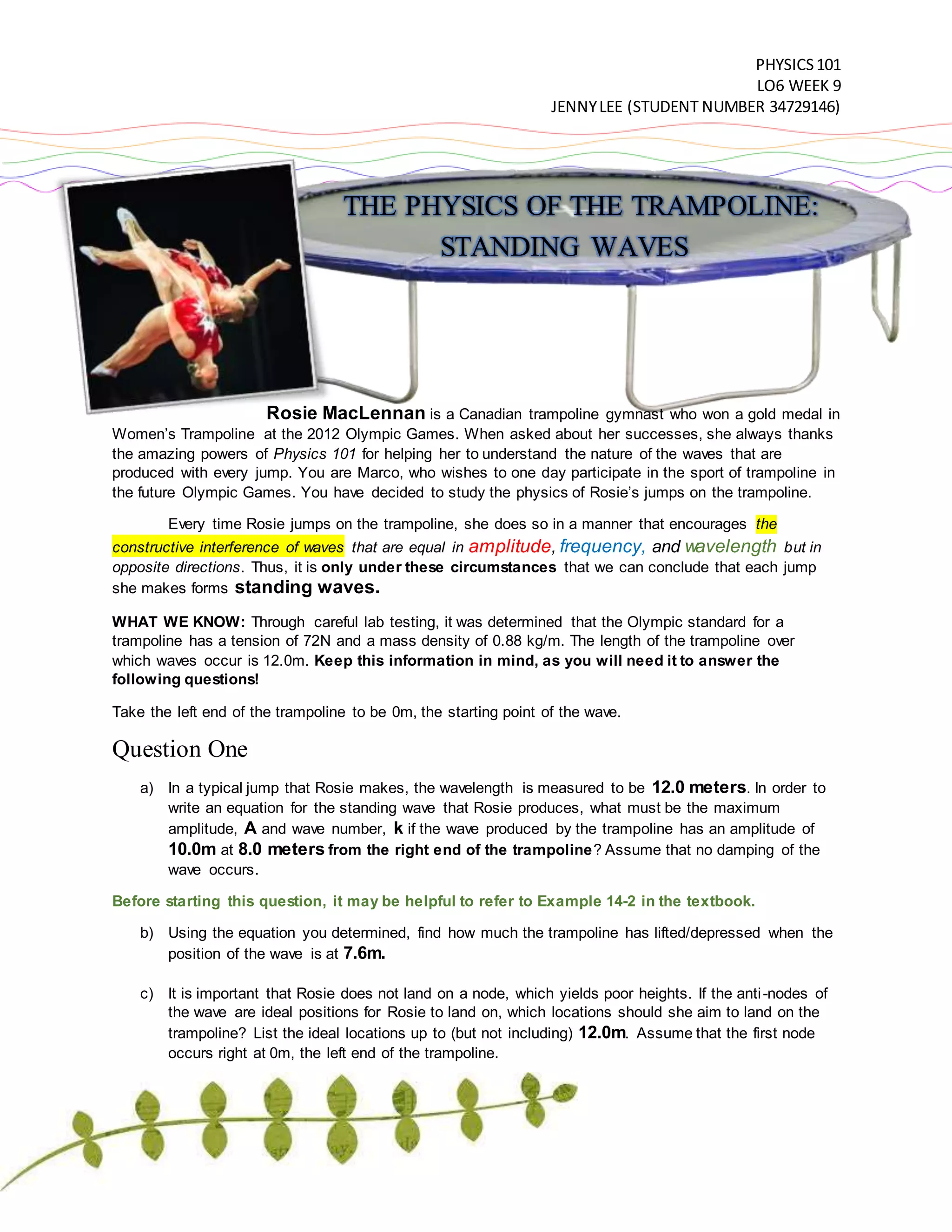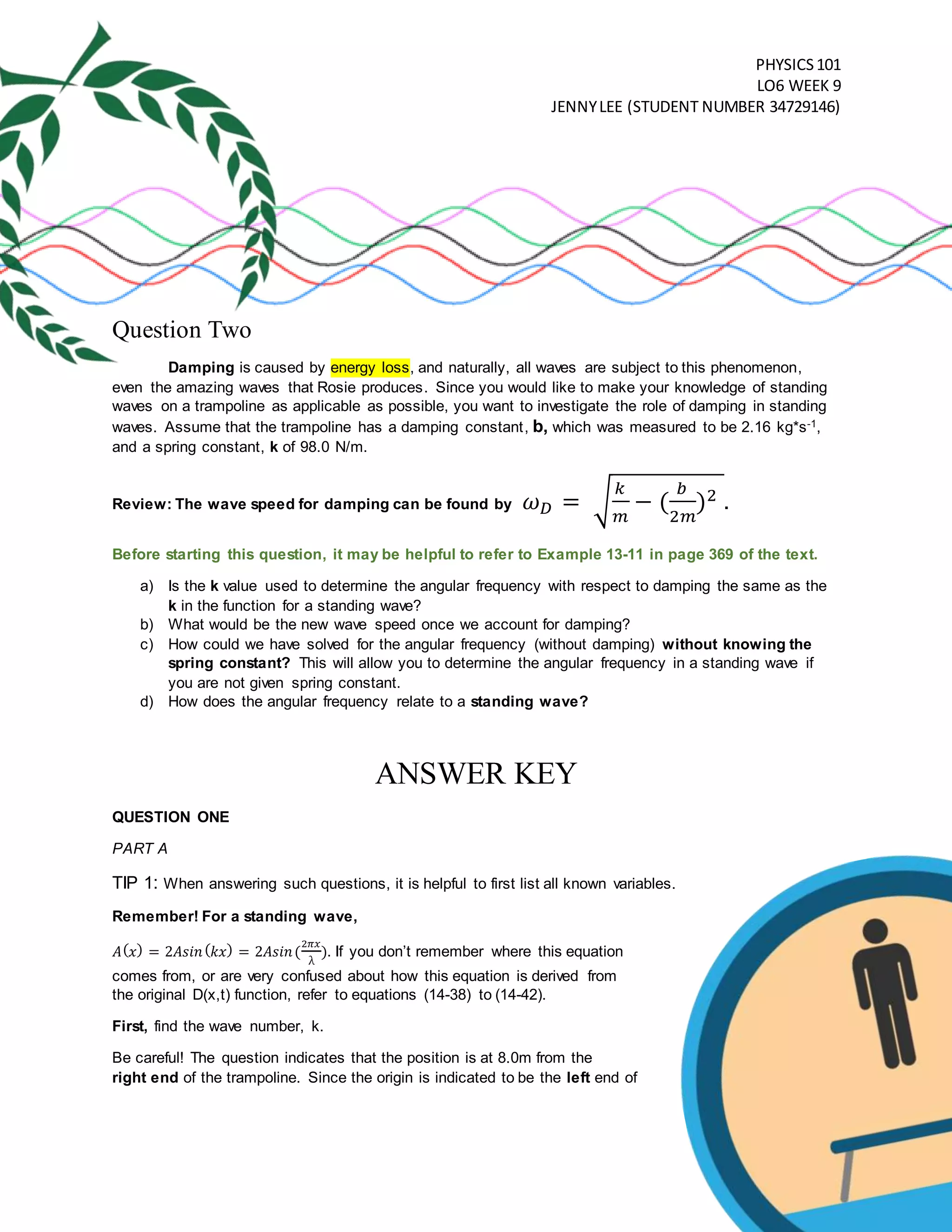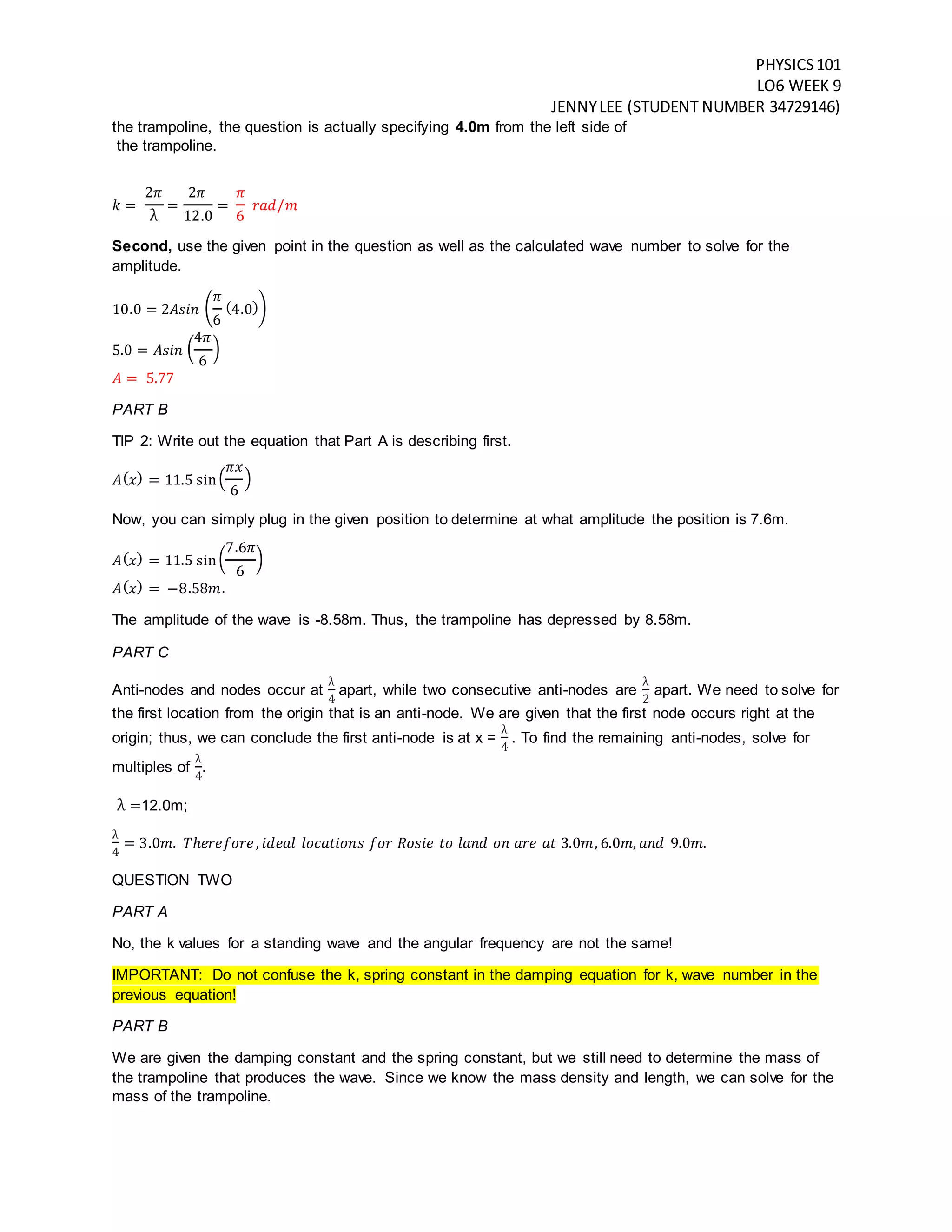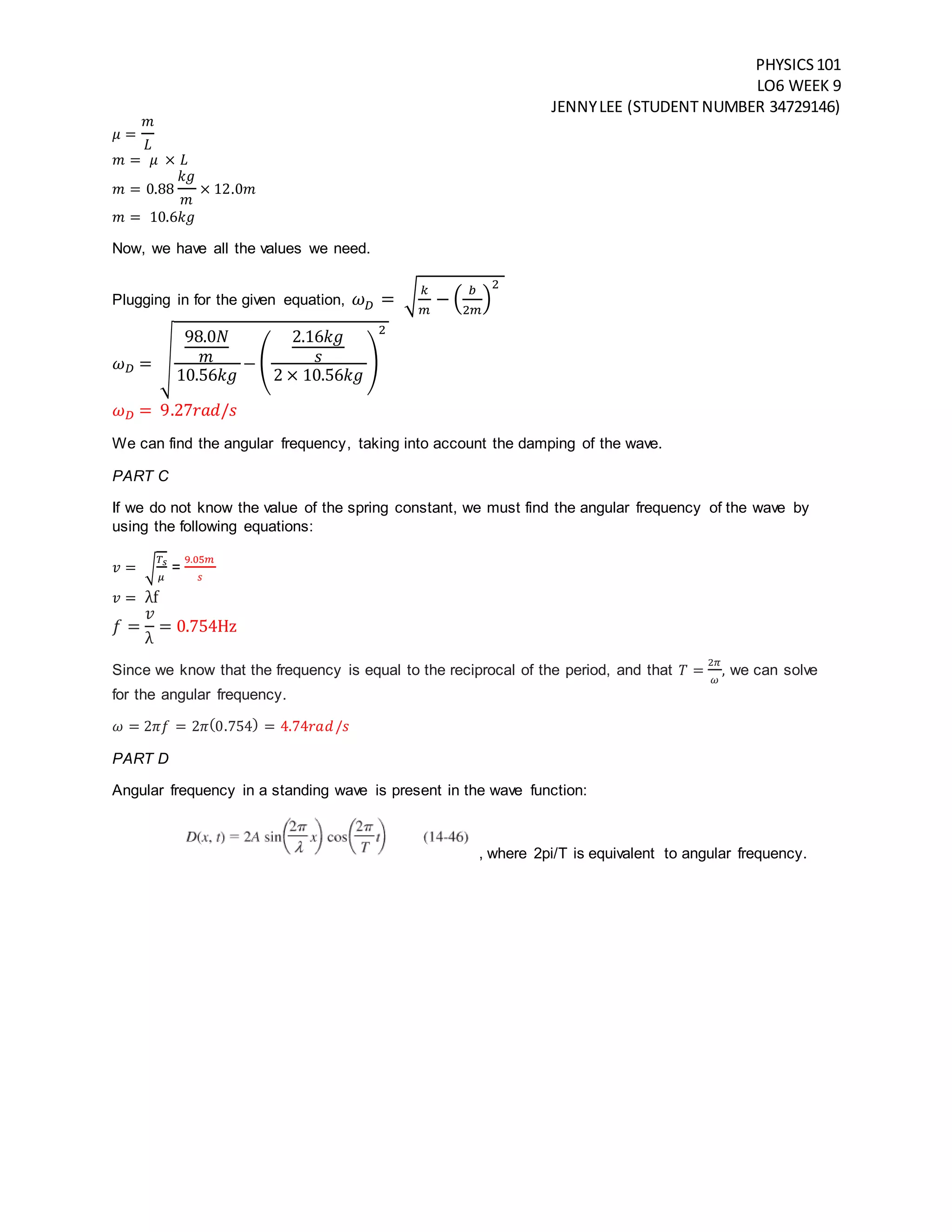Rosie MacLennan is a gold medalist in trampoline gymnastics who credits her success to understanding standing waves. Marco wants to study trampoline physics. When Rosie jumps, she forms standing waves through constructive interference of equal, opposite waves. The document provides information about Rosie's trampoline and asks Marco to analyze the standing waves, accounting for both no damping and damping effects.



